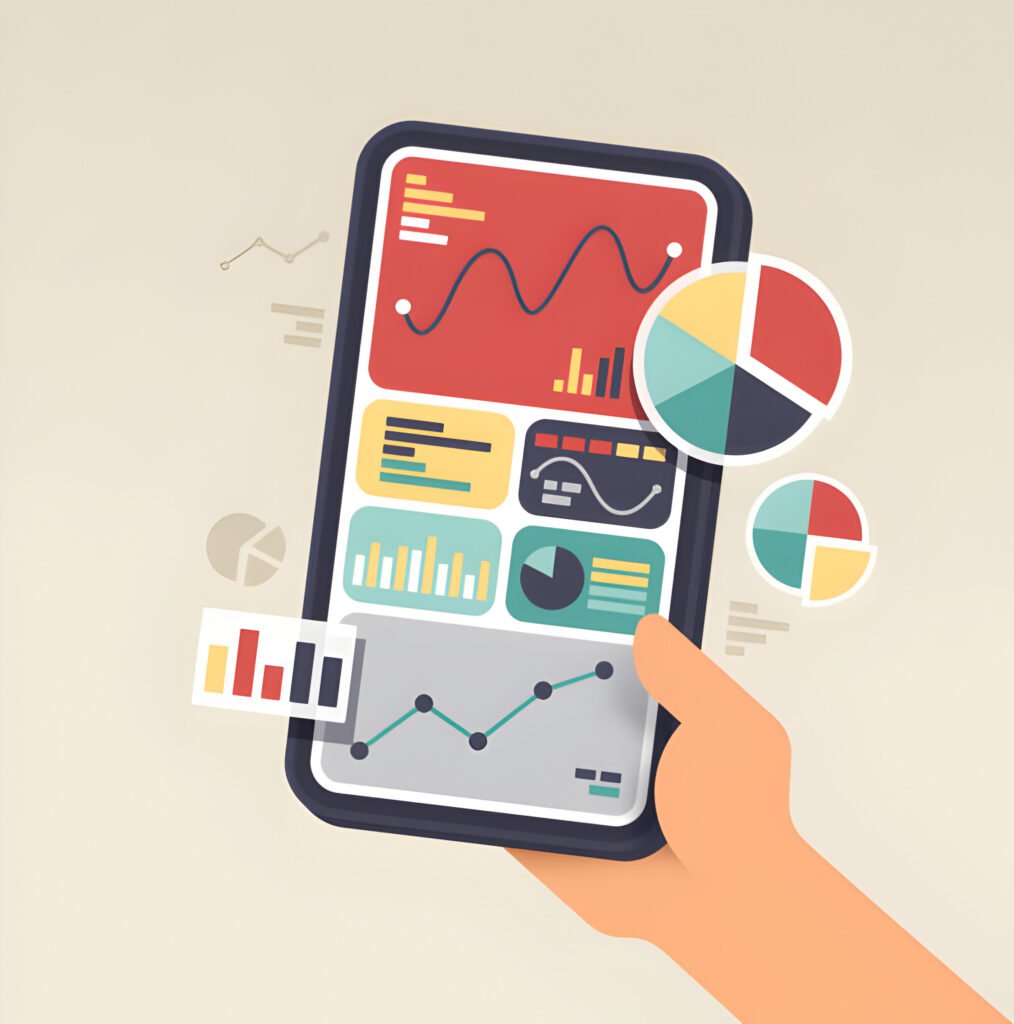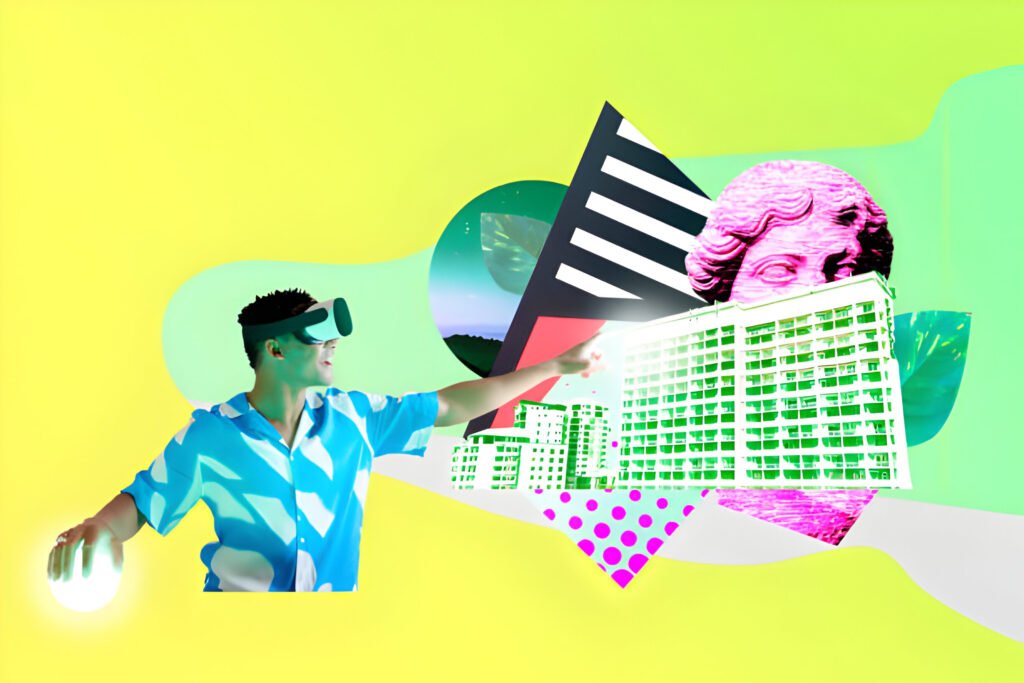- Amelia Sabestine
- 0 Comments
- 1728 Views
Are you aware of how constantly evolving the internet is? You better get ready, because websites will look very different in a few short years. You can anticipate the dominance of a few key web design trends in 2024.
Both web designers and business owners need to be alert in this dynamic environment to continuously adjust to the ever-changing tools, methodologies, and user expectations. This begs the question of what cutting-edge trends in web design fads will be popular in 2019 and how to jump on them early.
By 2024 and beyond, a few key trends seem to change the way we create, design, and engage with the digital world. With the rise of artificial intelligence and the emergence of new programming languages, the future of custom web development is full of opportunities and challenges.
In this guide, we’ll look at the trends that could change our roles as web developers and shape the digital landscape of the future.
What Are The Web UI Design Trends In 2024?
Web design trends for 2024 will emphasize interactive graphics, inclusive experiences, and intelligent interfaces. Some specific trends to watch for are:
Dynamic And Immersive Visuals
In 2024, websites will entice users with state-of-the-art graphics. Consider AR/VR, parallax scrolling, and 360-degree product views.
- Background images move more slowly than foreground images when you scroll with parallax, creating a 3D effect. This simple trick gives cinematic quality and visual depth.
- 360-degree product photography allows customers to view items from every angle. This fully immersive experience builds trust and connection with products before purchasing.
- Virtual and augmented reality on websites will transform how we shop and interact. From virtually “trying on” clothing to experiencing a business’s location and services, VR/AR creates highly memorable digital solution services.
While these web design trends require investment, the rewards of boosted user engagement and sales can be well worth it. Start exploring how you can incorporate dynamic and multidimensional visuals to bring your website and brand to life.
Accessibility and Inclusive Design
To create an accessible web experience in 2024, focus on inclusive design.
Readable text
Use clear font styles, sizes, and colors. Opt for sans-serif fonts like Arial or Veranda. Keep line lengths around 70–100 characters and spacing roomy.
Images
To help visually impaired users who are using screen readers, provide images with descriptive alt text. Keep images relevant and avoid redundancy.
Navigation
Ensure all content can be reached within 3 clicks from the home page. Use clearly labeled links, buttons, and headings. Consider adding keyboard shortcuts, breadcrumbs, and a search function.
Responsiveness
Your website must adjust to any screen size because more people are using mobile devices to access the internet. Employ a mobile-first design strategy to deliver the best possible viewing experience.
Accommodate Disabilities
Allow users to adjust color schemes, increase text sizes, turn off animations, or use a screen reader. Follow WCAG guidelines to meet the needs of people with auditory, cognitive, or motor difficulties.
It’s important to think about how your design affects various users and abilities when creating an inclusive online experience. You’ll give everyone a better experience in 2024 if you optimize for accessibility.
Enhanced Personalization
An engaging user experience is largely dependent on enhanced personalization. Websites are becoming increasingly intelligent at customizing content for each unique user as AI and machine learning develop.
Personalized Recommendations
Search results, past purchases, and user preferences are all used by recommendation engines to make recommendations for content, goods, or services. Based on the items in your cart, for instance, an online retailer might suggest other goods you might find interesting. Content sites may suggest related articles to keep you engaged.
Expect enhanced personalization to permeate all areas of modern web design trends in 2024. By blending Al with an intuitive user experience, websites will seem almost clairvoyant in anticipating our needs and streamlining our browsing. But don’t worry; your privacy and preferences will remain under your control.
Mobile-First Design
Web designers must prioritize mobile interfaces due to the continued dominance of mobile usage. Nowadays, mobile devices account for almost 3/4 of all web traffic. A ton of prospective visitors and buyers are passing up your website if it isn’t mobile-friendly.
A few important points to remember are:
- Make sure your website is responsive, meaning it will change to fit various screen sizes on its own.
- Make links and buttons big enough so that a finger can tap them with ease.
- For an optimal mobile experience, keep the layout’s number of columns to one or two.
- Keep forms short and simple. Don’t crowd too many fields into a small space.
- Use a mobile-friendly font size, typically 16 pixels or larger.
- Test and view your site on multiple mobile devices to ensure the best responsive design.
With mobile web usage eclipsing desktops, creating a stellar mobile-first user experience is vital for any modern web design service. Follow these tips and your site will be primed for the mobile masses.
Kinetic Or Dynamic Typography
Kinetic typography, also known as dynamic typography, is a type of typography that is animated creatively. The movement and animation of the type help to visually emphasize parts of the message or make the overall design more engaging.
In 2024, kinetic typography will be all the rage in web design. Designers will animate type to seamlessly transition between different arrangements, sizes, positions, and fonts. Subtle animations will bring static type to life and help guide the viewer through the content in an interesting fashion.
Expect to see the type that slides, fades, zooms, and rotates. The animations will be smooth and enhance the overall user experience. When done well, kinetic typography can transform simple text into a visual treat that dazzles visitors and brings more dynamism to web pages.
Al and Automation Integration
As artificial intelligence and automation continue to advance, web design will incorporate more of these technologies. Chatbots, predictive search, and personalized recommendations are ways Al will enhance the user experience. Automation through no-code website builders lets non-technical users easily create and modify sites.
With the help of programs like Chatfuel, Manychat, and MobileMonkey, anyone can create chatbots for their website without knowing any code. These chatbots can answer questions about products, lead generation, customer service, and more. Al-powered predictive search makes use of user behavior to generate more intelligent results. Data is used to make product recommendations that are specific to each user.
With drag-and-drop interfaces and pre-designed themes offered by no-code website builders like Wix, Weebly, and Squarespace, even non-techies can create eye-catching, business-like websites. These platforms automate backend technical tasks, facilitating an easy DIY approach to web design with minimal manual work needed.
Al and automation are the future of web design. They will continue to transform how websites look, function, and are built as technologies advance and become more widely available. The integration of these technologies allows for a superior user experience through predictive, personalized interactions and simplified, low-effort web design capabilities. Overall, the future is bright for automation in web design.
Vibrant Graphic Elements
Vibrant images and colors will rule web design in 2024. To draw users in, websites will have vibrant color schemes, dynamic graphics, and interactive components.
Neon colors, duotones, and contrasted color schemes are used to create lively and dynamic websites. Gradients will also return, this time with retro-inspired hues and psychedelic color fades. These loud and lively colors latest trends in web design will make sites pop.
Visuals will also take center stage, with 3D graphics, scrolling animations, and cinematography—still photos with minor repeating movements. These eye-catching animations produce a sense of visual depth and dynamism. Websites will come to life with interactive sliders, hotspots, and parallax scrolling, in which the backgrounds move at a different speed than the foreground.
These bold and brilliant design choices may seem chaotic or distracting. But when used intentionally and cohesively, they will make sites unforgettable and visually striking. Vibrant colors and graphics are key to creating engaging user experiences in 2024.
Dark Mode
Readers can now access a “dark mode” on an increasing number of websites. Make sure this feature is on your website if you want it to be the most popular one in 2024.
Instead of the standard combination of a light background and dark text, a website in dark mode has a dark background and light text. This may be less taxing on the eyes of readers, particularly in dim lighting. It’s gained popularity in terms of aesthetics as well.
You must code your website to be able to alternate between an inverted color scheme with light text and a dark background to implement dark mode. Be sure to also adjust images and icons to either invert them or provide alternate versions. Think about letting your guests select their favorite mode and setting it as the default for each time they come.
Using dark mode on your website is a simple way to improve accessibility and reader friendliness. You must include a chic dark mode option if you want to stay ahead of the web design curve. Your visitors will appreciate how modern and forward-thinking your site is, and their eyes will thank you too.
3D And Immersive Experiences
In 2024, websites will use virtual reality and 3D to provide users with an immersive experience.
In recent years, VR and AR technologies have improved in terms of sophistication, affordability, and accessibility. Businesses will make extensive use of these technologies to engage with consumers and provide them with innovative ways to experience products and services.
E-commerce websites, for instance, sometimes employ 3D product models that you can view from every angle to make it appear as though you are holding the item in your hand. You could be taken on a walking tour of a holiday destination or into a hotel suite using virtual reality. Through the use of your device’s camera, augmented reality can project digital information or content onto the actual world.
These immersive technologies are becoming more commonplace and useful for businesses, although their original purpose was primarily gaming. Major brands should anticipate seeing 3D and virtual elements on their websites and mobile apps by 2024. Prepare to dive in, as the future is here!
Voice User Interface (VUI)
The fields of voice assistants and voice user interfaces (VUIS) are developing quickly. VUIs will probably take over web design and how we interact with mobile apps and websites by 2024.
Voice assistants will be incorporated into more websites as natural language processing advances to assist users with navigation, search, and task completion. Some sites are voice-first, optimized primarily for voice input and output. Having a voice interface will make websites and apps more accessible to many users.
Data Privacy And Security
Aim for legal compliance and customer trust by taking data privacy and security very seriously.
Passwords, credit card numbers, and other sensitive data should be encrypted. To encrypt data both in transit and at rest, use secure protocols like HTTPS and SSL.
Whenever feasible, turn on two-factor authentication. An additional degree of security for user accounts is added by requiring a second way to confirm a user’s identity, such as a code sent to their phone or a physical security key.
Minimize data collection and be transparent. Gather personal data only when it’s required to deliver your services. In your privacy policy, be sure to make it clear what information you gather and how it will be used. Provide users with the choice to refuse data collection and have their information deleted.
Test your security protocols and systems regularly. To find any weaknesses in your systems before malevolent hackers do, do penetration testing. Keep abreast of the most recent cybersecurity best practices.
It’s crucial to abide by data privacy laws like the CCPA and GDPR. These regulations require strong security protocols, consent, transparency, and data minimization. Serious fines and a decline in customer confidence may arise from noncompliance.
Building a trustworthy brand requires putting privacy and security first, especially in light of the increasing frequency of data breaches. Your users will value your dedication to safeguarding their private data.
What Is The Future Of Web Design In 2024?
In 2024, the following will be the main focus of web design:
Technology-Inspired Design
Being alive right now is full of excitement. Contrary to what certain movies and TV shows suggest, we currently have robot maids and flying cars instead of these things:
- Generative AI systems, like ChatGPT, are used in restaurants with robot servers.
- Smartphones are miniature computers with significant processing power.
- VR glasses that use biometric authentication
High-tech solutions are needed in both the business and consumer markets. Consequently, businesses engaged in these expansive technology domains (fintech and health tech) will produce websites and applications that have a more futuristic appearance.
Design with Textures
Even though Big Tech and AI are taking over a ton of industries, many people yearn for some humanity and realism when they browse the internet.
Thus, while tech companies will likely adopt designs that look more futuristic, other brands will likely take the opposite approach. Instead of using a lot of neon colors, flat graphics, and animations on their websites, they will add some depth and texture. Companies that produce tangible goods or offer in-person services will probably be the ones to use this strategy.
Extreme Minimalism
This is yet another web design fad that is reactive. It seems like some brands are going to say “enough is enough” and revert to their more traditional looks instead of embracing the audacious, boundary-pushing looks that the AI era has inspired.
However, hyper-minimalism won’t entail the latest trends in web design: bland, colorless, or unattractive websites. More emphasis will be placed on embracing white space and letting guests take their time, space, and space to fully take it all in.
Not all brands will be able to capitalize on this modern trend for websites for individuals and entrepreneurs, as well as web design for small businesses.
Flexible Headings
While a transparent header design may seem great, how likely is it that the button, text, and logo will be able to stand out against the background of each section they pass over? Eliminating the sticky header is one way. However, by making users scroll to the top every time they want to view another page, you run the risk of making the website less user-friendly.
Another option is to make the transparent header solid after the user exits the section containing the hero. That might, however, compromise the website’s seamless design, which is partially why transparency was initially desired. If the color contrasts too much with the rest of the design, it can also make the header unappealing.
These adaptable headers adopt the look of the background they cross paths with. It works well on colorful websites, but it might not be the best choice for ones with a lot of background images and videos.
Scrolling on Multiple Planes
When a user scrolls down a page, content usually advances from top to bottom in the same direction. Although everything stays inside that y-axis, there may be times when the page appears to stop moving while animations are playing.
That will alter with the use of bi-planar and multi-planar scrolling. Users may now scroll down web pages to see content that moves across the x-axis. It appears to be moving left and right as well as up and down, just like in a classic Mario game.
When there is multiplanar scrolling, the content slides along the z-axis backward. It is less typical. But in the upcoming years, we will see it become popular. Imagine that as new content moves to the forefront, older content gets pushed to the side. Alternatively, content could slide offscreen, and new content would appear from the back.
Hand-Written Logo Components
For a while there, it appeared as though a lot of logos were being flattened and overly simplified through digitization. Initially, large tech companies were the ones who did this frequently, and everyone else seemed to follow suit.
Brands will start to embrace something more genuine and relatable in 2024 and beyond, moving away from the digital flat logo. Occasionally, a letter or shape inside the logo will represent the hand-drawn element. The entire logo will appear to be hand-drawn in other situations.
Skeuomorphism
In web design, skeuomorphism aims to provide a recognizable and user-friendly interface while producing elements that imitate the look, feel, and functionality of their real-world counterparts. By helping people quickly learn how to interact with different elements, it improves the usability of the interface.
Reviving in popularity, skeuomorphism is an emotional response to our over-reliance on technology in daily life rather than just a nostalgic fad.
People are drawn to designs that recall a time before digital devices because so much of our lives these days are spent online. Furthermore, some elements, such as navigation menus and call-to-action buttons, feel more natural and intuitive because skeuomorphism is all about recognizable non-digital elements like switches, buttons, and dials.
Parallax Scrolling
The parallax scrolling technique produces a more dynamic and depth-like visual experience by having background content move at a different speed than foreground content. This subtle but effective design choice improves storytelling, guides users through the website, and increases engagement by providing them with an engaging and interactive experience.
In the world of design, parallax scrolling is not a novel concept—it was among the most popular a decade ago. However, in 2024, it’s back on the rise with a fresh approach. These days, parallax scrolling will include more live and video content in place of static designs and imagery.
This comeback involves more than just bringing back a bygone fad—it involves modernizing it with cutting-edge technology. The incorporation of dynamic imagery, video, and live content into parallax frameworks satisfies the increasing need for engaging and visually appealing online experiences.
Microinteractions
Microinteractions are discrete, interactive components found on websites that react to user input, such as clicking or hovering over buttons. These frequently subtle interactions significantly improve the user experience by increasing engagement and intuitiveness.
Microinteractions, in our opinion, will progress beyond visual cues. Anticipate a more tailored and context-aware experience as these interactions adjust to user behavior and preferences, making for a more immersive experience.
In recent years, the excessive animation and interactivity of websites have made them unusable and unresponsive for users. By adding enjoyable and meaningful user interactions that enhance rather than overpower the website’s content and design, micro-interactions can counteract that.
Typography Using Teleprompters
Avoiding overwriting so much that readers become disinterested is one of the challenges we encounter when producing content for websites. People visit websites to learn about the products they can purchase, not to make purchases. Put differently, people are easily overwhelmed by too much information at once and have short attention spans.
But there are times when it’s not practical to write succinct, snappy snippets. A lot more of this will be around in 2024, even though some designers have already fixed this problem.
Although it doesn’t operate precisely like a teleprompter, the effect is comparable. When someone speaks, text is gradually fed onto a screen using a teleprompter. As a result, they can communicate with the audience as though they are speaking spontaneously. When utilizing teleprompter typography, the text becomes highly readable (opaque black) as the user scrolls down the page, instead of being difficult to read (light or semi-transparent).
With so many new tools and technologies available to improve the user experience, the future of web design appears to be bright. Simplicity, video, and personalization will dominate, with interactive and animated elements bringing sites to life.
Conclusion
Finally, the latest trends in the website design list for 2024 have come to an end. Almost all of them are likely to rule the industry in 2024. The previously mentioned trends should be kept in mind when updating an existing website, completely redesigning it, or developing a new one.
Make your users’ lives easier and more enjoyable by implementing these UI/UX design trends into your workflow and product strategies. It will help you stay relevant. Recall that 2024 trends aren’t just about looks; they’re also about developing experiences that make an impact and help your products succeed.










